|
Alphabetical List |
|
|
|
|
|
|
|
County List and Topics |
|
|
|
Please sign my Guestbook and leave feedback |
|
Whose is this site? Welcome to my website. My name is Lionel Wall. I am a retired manager and I now live in Stamford, Lincolnshire - one of the finest and most historic in England. I have been interested in mediaeval churches for many years and this site is my “labour of love”. I should point out, to avoid any misunderstanding, that I have no religious belief. As you would expect, however, I have the greatest respect for those that believe and stand in awe of the faith that gave rise to this most wonderful collection of architectural treasures. |
 |
|||||||||||||||||||||||||||||||||
|
What is the Site about? At the selfish level it is a record of my own travels and the places I have enjoyed best. It also keeps me out of mischief in my retirement! More importantly, however, it is a celebration of the incredible diversity, eccentricity and beauty of the English parish church. I am fond of saying that it is our good fortune that the British Museum is not able to chisel out and miniaturise the best of our churches so that they can squirrel them away in some vault under Bloomsbury. For the English parish church is the enduring and timeless mirror of our local history. It is where our people were baptised, married and buried. Our churches have seen famine, pestilence, plague and war. They bear witness to the fashions, intolerances, the benevolence and occasional downright cruelties of the Christian faith. They still stand today as the immovable timeless rocks around which the waves of history crash, waiting for the next turn of the card - or for the next mysterious way in which God will perform his wonders, depending on your point of view. They are, even in these irreverent times, part of the heartbeat of our communities. I am often saddened when I visit a church to see other visitors come in, do a perfunctory five minute tour of the church and then leave a banal entry in the visitor's book like "beautiful" or "peaceful"! Many people look at everything and see nothing and I think it's a great shame. People do find churches beautiful and they must have some interest to enter in the first place. How much more enriching their visits would be, however, if they could understand what is exceptional, what is everyday; what is ancient, what is modern; and the historical context of what they see. There are plenty of books that fulfil that need admirably but it needs a conscious effort to purchase. My ambition is that casual visitors to my site will be inspired by what they find out and be motivated to find out still more and to visit churches with eyes wide open. Our parish churches are our greatest historical heritage - and they are free to visit. They need your support. Get out there, buy their guidebooks and postcards and put a few bob in the wall safe. |
||||||||||||||||||||||||||||||||||
|
Lionel |
||||||||||||||||||||||||||||||||||
 |
||||||||||||||||||||||||||||||||||
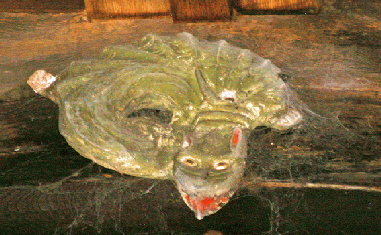 |
||||||||||||||||||||||||||||||||||
|
What this Site Isn’t It is not an equivalent of Simon Jenkins’s “1000 Best Churches!”. The churches described here are not the best in England. I have only visited a fraction of them! Even Jenkins claims “only” to have visited 2500, having first used secondary sources to provide him with a “short list”. I don’t get paid. I don’t have a book deal. The only claim I will male is that every church on this site is worth visiting - that it is “great”. . If your favourite is not here it is not because I don’t rate it: only that I have either not visited it or not had time to write about it. I find time to write about only one in three churches that I visit. |
||||||||||||||||||||||||||||||||||
|
Can You Help Me Out? |
||||||||||||||||||||||||||||||||||
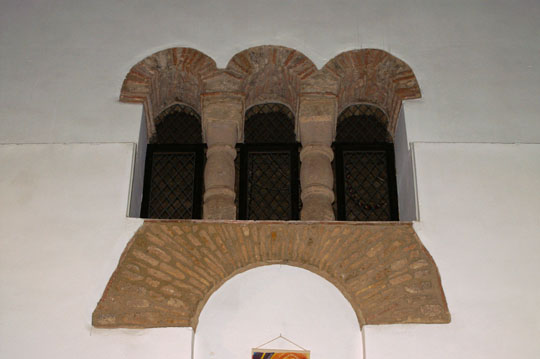 |
||||||||||||||||||||||||||||||||||
|
My website has been in existence for about twelve years and has consumed countless hours in editing photographs, designing the pages and writing the text. It is a labour of love from which I have never sought a penny in revenue, to the bewilderment of my friends it must be said. I don’t even take a fee from the hundreds of people who have asked to use my photographs for non-commercial purposes on websites, in presentations, in dissertations and so on. Everything I do relating to churches I have done and will continue to do on a “not for profit” basis. I am honoured by the number of visits I receive and humbled by your generous feedback. Do not be fooled by that “.co.uk” web address. This site is the work of one individual - myself. If you visit this site and are inspired by it, then you are one of literally millions that have done so since its inception. I know from your own feedback and from the statistics I receive that many of you spend many hours browsing the pages and return again and again. Maintaining this website is not, however, free for me! I have annual costs – which are becoming exorbitant - for web hosting and domain registration and have over the years bought various pieces of software to make more possible. The sheer size of the computer files I am now handling has necessitated the purchase of a new, much more powerful PC and expensive large monitor. Needless to say, costs are only going in one direction! I have happily absorbed these costs for years, arguing that it is, after all, my hobby. Things now, I am afraid, are coming to a head. Unfortunately my website – inevitably – is constructed on old and now-unsupported software which was written for old versions of Windows. That and the size of the files it is now handling means that it can malfunction spectacularly, costing me untold worry and many hours in complex recovery work. To cap it all, I have recently faced a hefty bill from an IT professional to rescue me from an inexplicable glitch with Windows. Conversion to a more robust new system will involve him developing tools to enable the transition. I am also painfully aware that mobile phones are now the preferred route to the internet for many people and my set-up makes it impossible for me to optimise my site to take account of this. Rather reluctantly, then, I have decided that it is fair to at least invite small one-off donations to help me out with my costs and, if there is sufficient response, to fund a transition to a new platform. This is purely voluntary. There is no entry fee to this site. If you feel you can contribute even £1 or $1 (I am a cheap date!) then please contribute via PayPal using my email address brumman47@hotmail.com. My thanks to those who choose to do this. My love to you all: contributors and non contributors alike. You honour me by reading my work. Lionel |
||||||||||||||||||||||||||||||||||
 |
||||||||||||||||||||||||||||||||||
 |
||||||||||||||||||||||||||||||||||
|
“Bums, Fleas and Hitchhikers” It feels like aeons ago that I self-published a book catchily called “Demon Carvers and Mooning Men”. It talked about a group of stonemasons in the East Midlands who could be identified by their distinctive stone carvings on the friezes beneath church roofs. It is a great story and tells of a “company” of peripatetic stonemasons and enables us to draw many important conclusions about the building “industry” of the early fifteenth century in the wake of the Great Plague. |
||||||||||||||||||||||||||||||||||
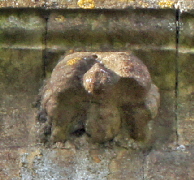 |
||||||||||||||||||||||||||||||||||
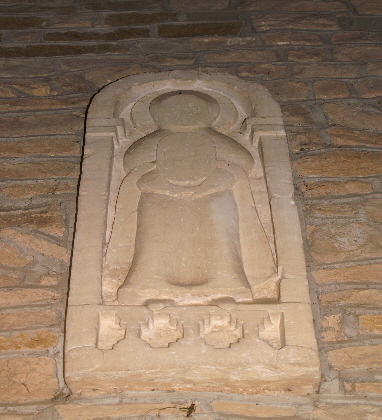 |
||||||||||||||||||||||||||||||||||
|
I had only a small run printed as it quickly sold out. No sooner had I had it printed, however, than I found new evidence of the mens’ work, providing yet more insights and changing my initial conclusions. Learning my lesson, I resolved to re-write it and “publish” it on this website so that updates and amendments were easy to accomplish. It is now called “Bums, Fleas and Hitchhikers” after some of the iconic carvings that this group of men - I still call them the Mooning Men Group” left as their little trademarks. By the Mooner shall you know them. |
||||||||||||||||||||||||||||||||||
|
“The World’s Greatest Church Trail” In September 2019 while staying for four days in Tewkesbury I carried out an epic “Church Crawl” through Worcestershire, Herefordshire, Gloucestershire, Staffordshire and Shropshire. It was a veritable odyssey around churches that have some of the finest examples of church art in England, much of it Norman. It encompasses, amongst other things, work attributed to both the “Herefordshire School” and “Dymock School” of sculpture. There are fonts, tympanums (tympana if you prefer!), great wall paintings, misericords. English church art in profusion and at its ancient best. I decided that this might just be the “World’s Greatest Church Trail” and almost certainly the best Free Show on Earth so I decided to try to cover all twenty-five churches - a mammoth task that took months to finish - as a single piece of work. For the sake of my sanity I have divided it into five bites. |
||||||||||||||||||||||||||||||||||
 |
||||||||||||||||||||||||||||||||||
|
Get the late Mary Curtis Webb’s “Ideas and Images in Twelfth Century Sculpture” free €¯from this site. You will see many references to this extraordinary piece of unpublished scholarship on this site. With the permission of Mary’s daughter I have made the entire book available to read on this site or to download free of charge. If you thought Norman carvers just created pretty designs and tymapana then this book will blow your socks off! To read or download it please follow this link where you will also be able to read my summary of her work as well as my own slant on it and see a few related “discoveries” of my own. |
||||||||||||||||||||||||||||||||||
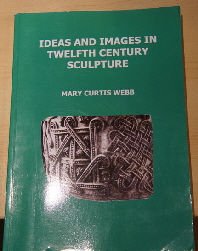 |
||||||||||||||||||||||||||||||||||
 |
||||||||||||||||||||||||||||||||||
|
There are many, many books out there about churches. You could spend a fortune. Many are, frankly, superficial an unworthy of any of you who have really delved into this site and been excited by the rich history of England’s parish churches. Most will have some merits but click on the heading to see the ones I think will really enlighten you. Many or most are out of print but still findable online. |
||||||||||||||||||||||||||||||||||
|
A Note about Navigating this Site The site is mostly organised into counties through the vertical menu bar at the left. The homepage is the topmost item: Great English Churches. When you navigate to another page (for example an individual church) the menu bar you see on the left will usually be incomplete. This is due to a frustrating issue with the website software I use. To see the entire menu bar it is always best to go back to the homepage. |
||||||||||||||||||||||||||||||||||
 |
||||||||||||||||||||||||||||||||||
|
Contact Me My email address is brumman47@hotmail.com I’m always happy to correspond. Guestbook Please spare a few seconds to leave a comment. I don’t receive any revenue from this website and your feedback is what keeps me motivated! Re-Use of Photographs If you wish to use any of my photographs please email me for permission - which to date I have never refused. If yours is a commercial purpose please contact me to license use of any photograph you need. |
||||||||||||||||||||||||||||||||||
 |
||||||||||||||||||||||||||||||||||
|
Cathedrals Although I visit them, I don't write about cathedrals at all. They are huge subjects and I can't add anything that hasn't been covered by the huge quantities of published literature written by genuine experts. |
||||||||||||||||||||||||||||||||||
|
Counties These have changed over the years. Some like “Middlesex” have disappeared altogether, Rutland was abolished and re-established by the quixotic John Major. Some, like Westmorland (now part of Cumbria), live fondly in the memory bit are now part of bigger counties. Some bonkers new ones like “Avon” and “Cleveland” have disappeared as fast as they were created and are missed by few. I use, in the main, “historical counties” but I do not perpetuate the existence of such as Huntingdonshire ( Westmorland or Middlesex, although some other gazetteers like Jenkins cling to them. Younger generations would know little of them. It’s time for us older generation to move on! I apologise if your county is omitted or under-represented. I do have other interests and I can't get everywhere! |
||||||||||||||||||||||||||||||||||
 |
||||||||||||||||||||||||||||||||||
|
The text and photographs All text and photographs are my own unless otherwise stated. I do draw heavily on Church Guidebooks which vary remarkably in scope and quality. Where I use their material and insights directly I usually acknowledge it. Writers of Church Guides are unsung heroes who often dedicate years to researching their subjects. We all owe them a huge debt. I try not to make this site a dry regurgitation of other people's research. I speculate freely about why things are as they are and I often challenge the accepted "stories", even those that have their origins in the research of the sainted Nikolaus Pevsner! My apologies to anyone who feels affronted by this. Photography in churches is not straightforward. Lighting is notoriously difficult in what are very big and open buildings. My advice is to use a camera that has good low light capability and to try to avoid using flash for close-ups of, for example, fonts and arcade capitals. Flash will completely wash out the detail. These days when we don't have to worry about film I would recommend taking some important pictures with and without flash. Often you will find that an under-exposed shot without flash can be manipulated in Photoshop or its like to make a much better picture than an accurately exposed shot that used flash. Of course, you will need a steady hand for slow exposures! A tripod is an absolute necessity. |
||||||||||||||||||||||||||||||||||
 |
||||||||||||||||||||||||||||||||||
|
There are all sorts of church-related issues mentioned on these pages and sometimes I do like to digress into all sorts of barely-related areas. Please click here to see an alphabetical issue index of topics and discussions. |
||||||||||||||||||||||||||||||||||
|
Technical Issues with this Site I compose this site in a WYSIWYG program called NetObjects Fusion. It enables me to compose the site with no use of html code. What happens, in effect, is that I compose in a Desktop Publishing type format and the program itself generates the html code necessary for web publishing. It would be nearly impossible for an individual to produce a site as big as this in html As any webmaster will tell you, however, web publishing is still a far from being a precise and predictable process! I pay huge attention to composing a neat, precise layout on my pages but Fusion still produces unexpected glitches when the pages appear on the web. There is often no way of getting it to do what I want. What's more, different web browsers (Internet Explorer, Firefox and the like) render pages slightly differently. So if you see some text a bit crowded together or untidy white spaces, to quote Elton John: "Don't shoot me I'm only the piano player"! Rearranging a site post-hoc also poses surprising challenges, especially moving or removing a page. One gentleman pointed out that I had attributed a church to the wrong county. I haven't dared to try to move it! |
||||||||||||||||||||||||||||||||||
 |
||||||||||||||||||||||||||||||||||
|
Designing your own Itinerary and the “Simon Jenkins” effect I doubt that any such book about churches has made the impact of Simon Jenkins’s “England’s Thousand Best Churches”. The title is pretty challenging and I am sure this is deliberate on Simon’s part.I I disagree with many of his inclusions and with perhaps more of his omissions, but his book is never out of my car when I travel. It is wonderfully written and should be the first purchase for anyone wanting to seriously explore our church heritage. I am only disappointed that none of the photographs are his own (the book uses “Country Life” archives) and frankly I don’t know how anyone could write such a book without his own photographs to jog his memory. To put it into perspective I usually take at least one hundred photographs at any church I expect to write about. Sometimes 200-300. Why don’t I agree with his choices? Well, who would? Few of us agree on anything, much less on 1000 things! I declare my own preference for Romanesque churches. Simon clearly has a real love of church monuments and memorials (as does my frquent companion occasional photographic collaborator, Bonnie Herrick) which I find, with some conspicuous exceptions, somewhat unexciting. It is definitely true, however, that every single entry in his book is for a church worth seeing. Some people, apparently, do a Simon Jenkins “trail” where they visit all of his churches in a given area. That’s great but, no respect intended, that reduces it all to a bit like trainspotting! You know, underline it in your book with the date! And you will miss a great deal. Many of the churches in this site are marked as “excluded” from Simon’s book. To drive past the likes of, for example, Stowlangtoft in Suffolk would be a tragedy. I hope that visitors will take note of this and realise that slavishly following any book or gazetteer will simply lead them to missing treasures that may be on their doorstep. If you are designing an itinerary in a particular area, Simon Jenkins’s book should be a starting point. The internet is another important resource, of course. Once you are on your church “trail”, however, you should make a point of picking up the many little leaflets that are produced that show all of the churches of interest within the local area. Many churches have leaflets that describe the half dozen or so in the immediate area. Tourist Information Centres often have these as well as some more expensively-produced (but usually free) leaflets covering a rather wider area. From these you can often uncover the churches that match your own preferences but which do not stir the “professionals”. |
|
Locked Churches For church enthusiasts this is one of the major frustrations. Sadly, all of us encounter churches that are locked. Insurance companies are often blamed, but it is our understanding (from a vicar!) that in fact some insurance companies regard visitors as a deterrent to thieves. Theft and vandalism, however, are a danger to many churches especially in urban locations. Insurance payouts cannot make good such damage so perhaps we should not be over-hasty in our condemnation of those churches that prefer to give limited access to visitors. That said, I think that in too many cases it is simply a case of “it’s our church and we’ll lock it if we want to”. Often the locked churches are in the most respectable of communities amidst prosperous homes. Urban wastelands often they are not. Many churches will leave a note of where a key is held, so don’t go away without checking the outside notice boards. I find that where I do have to find keyholders they are invariably obliging and polite. Some churches, I am afraid, don’t even bother with that or, to be fair, perhaps can’t find anyone available to be a keyholder in daylight hours. I understand this, of course, but it would surely be polite and less anger-inducing to put up a note to this effect? I know from conversations I have had up and down the country that the attitude of the Bishop or Deacons can often have a big effect on whether churches in a given area offer visitor access. That is very certainly the case with local vicars. Some Parish Church Councils are, however, completely intransigent and politely tell the vicar to get lost. So don’t automatically blame the vicar: some might agree with you! My advice is to do your research before you travel. There are three main resources you can use: 1. The church's own website will sometimes tell you about access. 2. The “Keyholder” app available from http://www.parishchurches.org/keyholder-app. This indispensable app shows the status of most English churches and uses information from users to stay up to date. I am afraid that many are only updated intermittently but I would say that if a church is shown as “closed” then it probably still is, sadly.. It is currently only available on Android devices but you can use an emulator on Windows or Mac. Get it from Google Play. There is a modest annual subscription (£14 in 2020) but you can save this in avoiding just one or two abortive journeys. By linking to Google Maps it will also take you to the actual church rather than relying on a postcode. 3. The website http://www.achurchnearyou.com gives you contact details for almost every English church. Do email the vicar or church office before making a long trip. Sometimes this website also has access information. It must be said, however, that some churches just can’t be bothered at all. Shame. It won’t stop you ever being disappointed but it will help you to plan. |
||
|
Ratings Simon Jenkins "England's Thousand Best Churches" provided a massive stimulus to church visiting and is deservedly seen as the oracle by many enthusiasts. He rates all “his” churches from one to five stars. Because people love “ratings” I have taken the liberty of reproducing them on this site. I toyed initially with giving my own ratings but decided against it. The truth is that is very hard to be consistent over a long period and the last exciting church you saw will generally get too high a rating, thus devaluing all that went before. Also your ratings will reflect your own preferences and thus be of less use to someone with different tastes. I disagree with many of Simon's ratings. He loves funerary monuments and, albeit with many exceptions, I find them a bit boring. Likewise, I am sure he doesn't have my own preoccupation with Norman fonts and tympani. |
||
|
Personal Recommendations This is dodgy ground given all I have said about “ratings” but everyone has their favourites. So here are mine : Kilpeck (Herefordshire). Late Norman. One of Britain’s greatest architectural treasures and almost unknown outside the ranks of the dedicated “church crawlers”. Combine it with a trip to nearby Garway for its Templar and Hospitaller connections. Escomb (Durham). The most perfect example of a Celtic Anglo-Saxon Church. Deerhurst (Gloucestershire). Anglo-Saxon. Some of the greatest remaining Anglo-Saxon carvings. Ludlow and Heath (both Shropshire). Ludlow for its perpendicular magnificence and for its superb misericords; Heath for its contrasting unadorned humbleness. See them on successive days if you can. Brixworth (Northants) for its sheer age and Anglo-Saxon enormity. Adderbury and Bloxham (Oxon) for their incomparable c14 frieze carvings. I prefer Adderbury personally. Others (including Simon Jenkins) would disagree but if you visit one you’d be mad not to visit both because they are so close! Lullington (Somerset) for some delightful Norman carvings and an idyllic village setting. Stragglethorpe (Lincolnshire) for its humble and serene timelessness. Combine it with the grandeur of Brant Broughton 1.5 miles away to see the extremes of British church architecture. Brockhampton (Herefordshire). An gorgeous Arts & Crafts church which proves that some twentieth century churches could happily embrace new styles whilst respecting the past. Wreay (Cumbria). The beautiful work of Sarah Losh who beat the Arts & Crafts movement to the punch by decades. |